There are plenty of things to do in Plaka Milos and the nearby villages. In this guide, I’ve put together the main attractions in Plaka, the capital of the beautiful Cycladic island. There’s also a selection of great restaurants 🙂
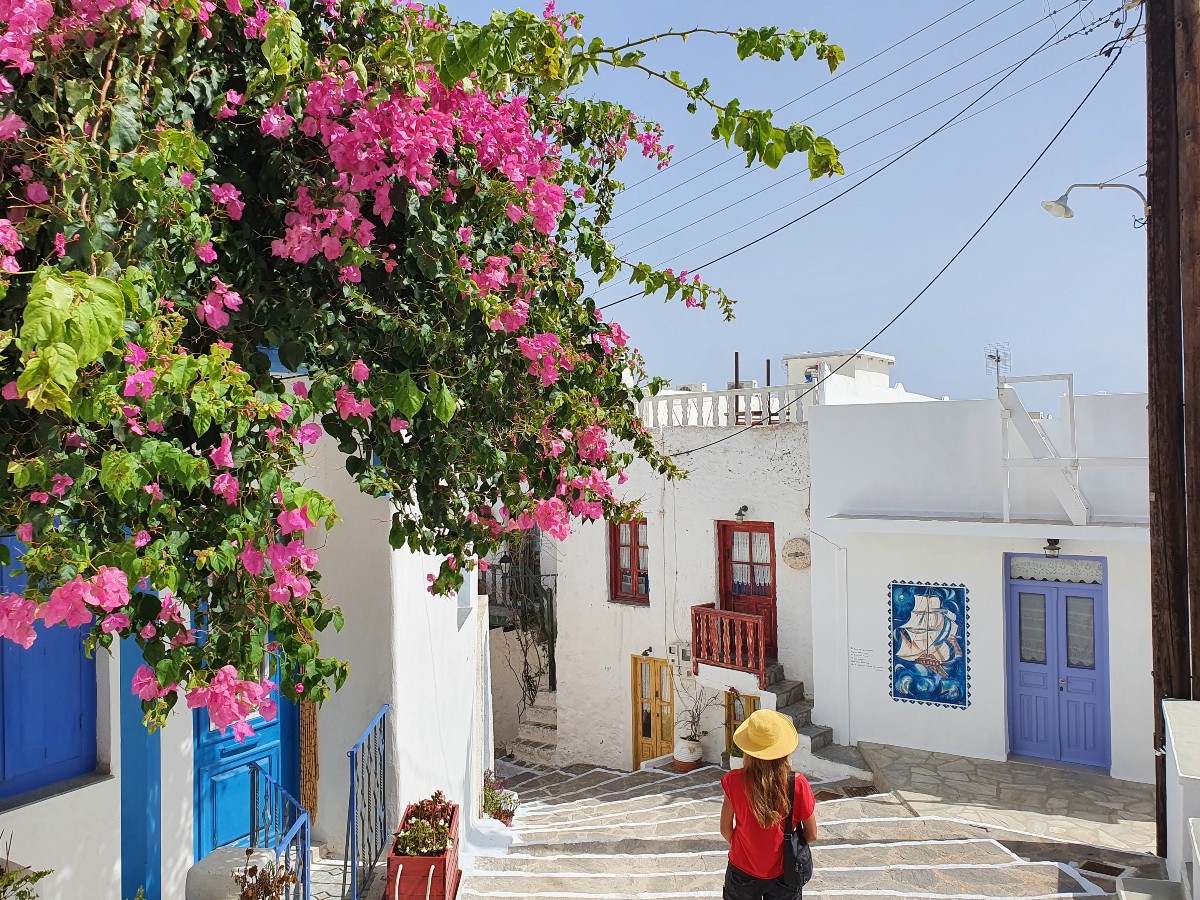
Plaka in Milos island Greece
Milos island in the Cyclades is an increasingly popular destination in Greece. The wild landscapes and iconic beaches are among the main reasons to visit Milos.
The picturesque town of Plaka is the capital of Milos. As it’s built up on a hill, it enjoys beautiful views of the Aegean Sea. In Greek, you will find it as “Πλάκα Μήλος” or, sometimes, “Μήλος Πλάκα“.
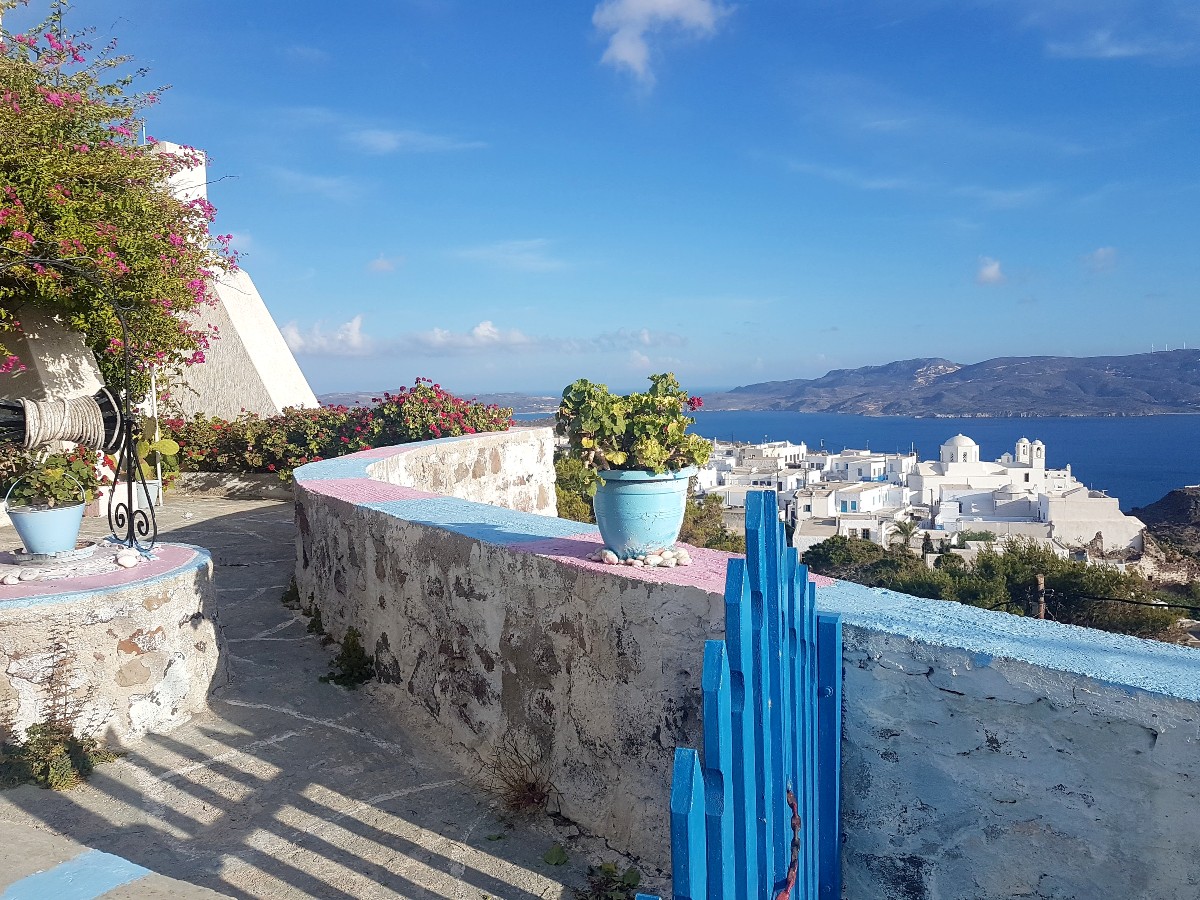
Plaka itself is a proper Cycladic town, with narrow cobble-stone streets, white-washed houses and churches, and a Venetian castle. You will find a nice selection of restaurants, cafes and bars, as well as souvenir shops and a few museums.
There are plenty of areas and villages around Plaka that are worth exploring, such as Trypiti, Klima and Triovasalos. Some of the island’s most visited sites are located in this area of Milos.
Here’s what to do in Plaka Milos, and the nearby villages.
Hike up to the Venetian Castle in Plaka Milos
When the Venetians took over Milos from the Byzantine Empire in the 13th century, they built a castle in Plaka. Like most castles in the Cyclades, it is not a typical castle surrounded by walls. It is a fortified settlement, with the outer houses built one next to each other, effectively constituting the exterior wall of the castle.
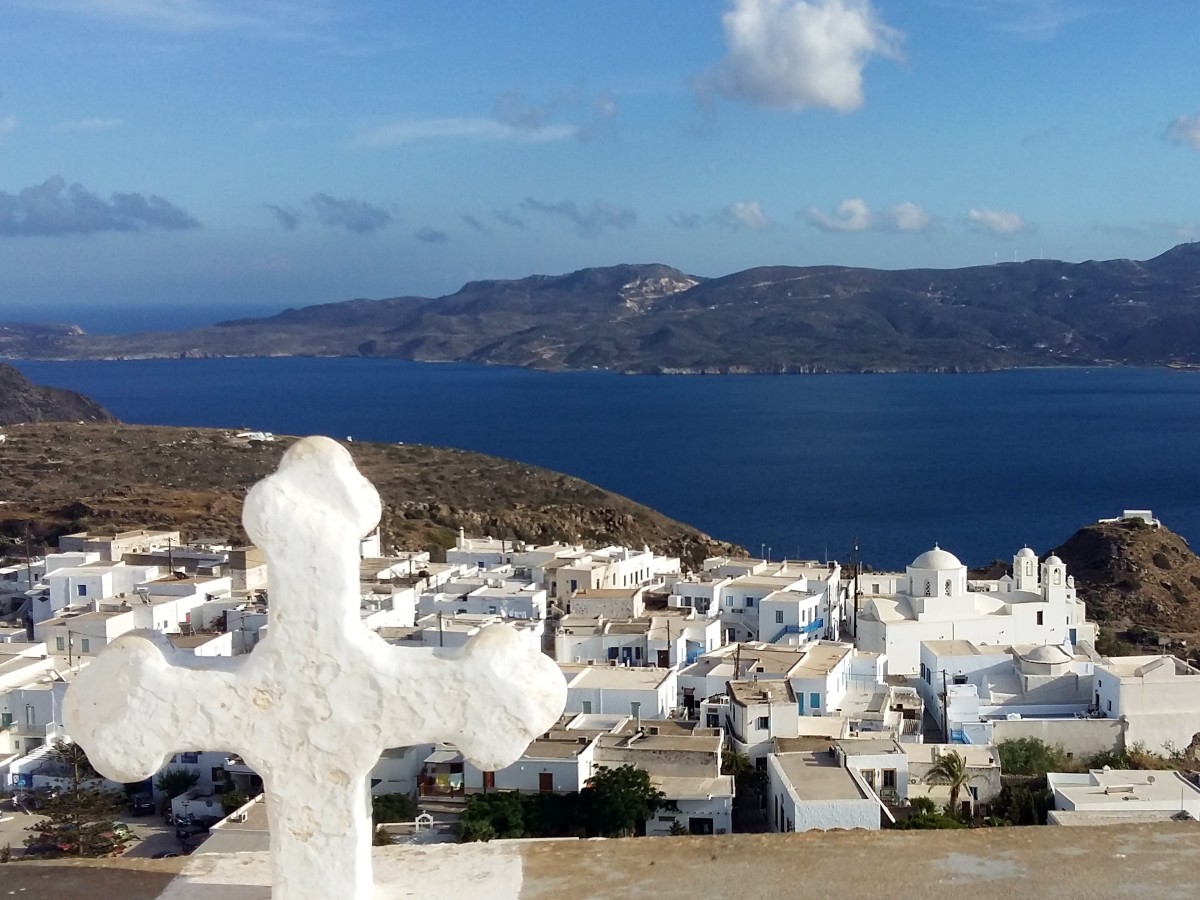
Today, its crumbling ruins remain, and hiking up to the top is a popular activity for travellers. The best time to visit Kastro is in the evening, when the heat of the day has cooled off. Bring some water with you and enjoy the fantastic sunset views over the Aegean.
Visit the churches in Plaka
Like all Cyclades islands, Milos has dozens of churches and chapels. Some of the most impressive churches in Milos are in Plaka.
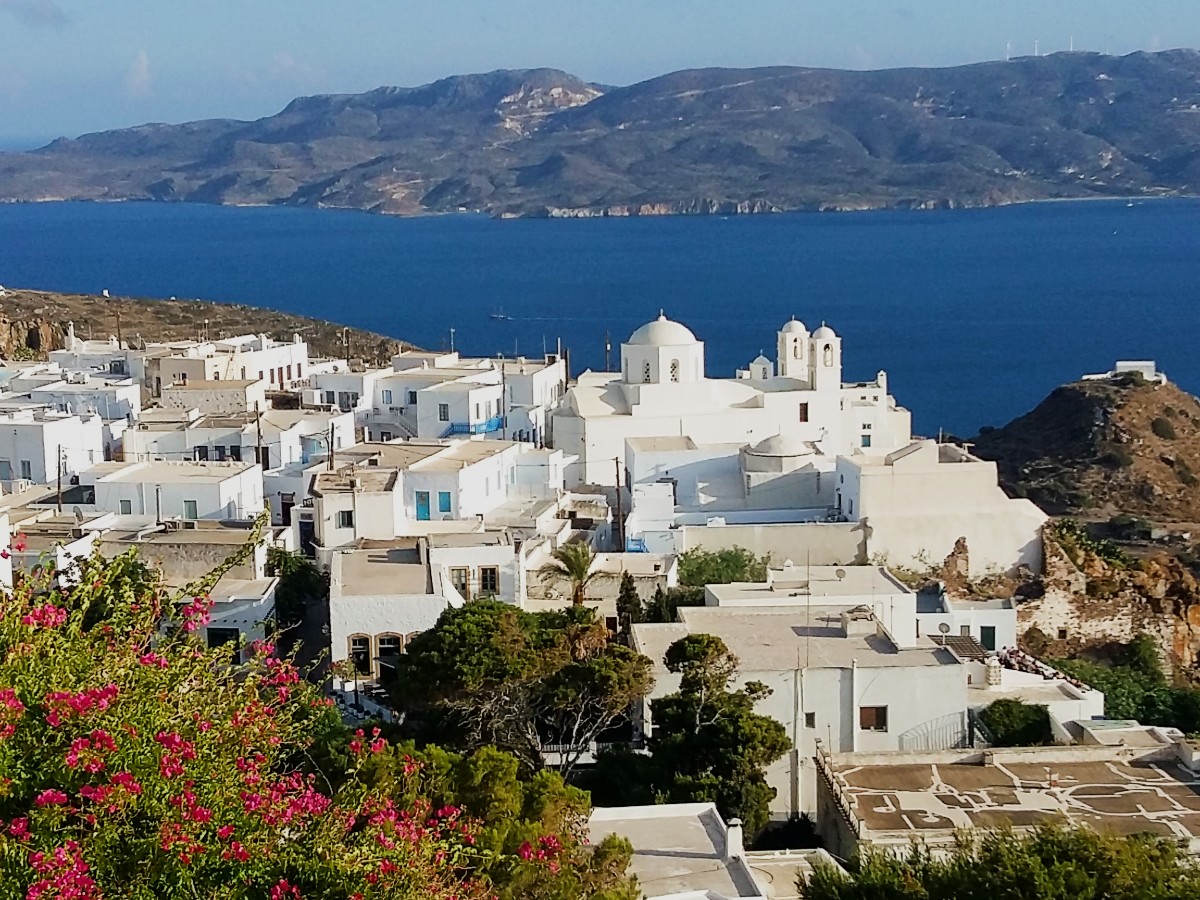
Panagia Korfiatissa, the Cathedral of Milos, is dedicated to the Virgin Mary. It sits right in the middle of a marble-paved courtyard, overlooking the Aegean. This impressive temple was built in the early 1800s, using materials taken from deserted churches in Zefyria, the old capital.
Several ecclesiastical artefacts exist inside the church. This includes a range of holy icons, wood workings, a gilded 16th-century Epitafios and precious garments.
On the way up to the castle, you will pass by the iconic Panagia Thalassitra church. Cycladic architecture at its best! It is dedicated to the Virgin, who protects all sailors and mariners.
This is among the most photographed churches in Milos, not least because of its incredible location. Inside the church, you can see a wooden iconostasis and several icons.
At the top of the castle, you will find the church of Panagia I Sikiniotissa. An older temple in this location was bombed during WWII, and the locals built the new church in 1944. There are several graves in the courtyard.
The Archaeological Museum in Plaka
The small Archaeological Museum in Plaka is probably the best place for information about the island’s ancient history. It is housed in a beautiful neoclassical building, designed by the prominent architect Ernst Ziller.
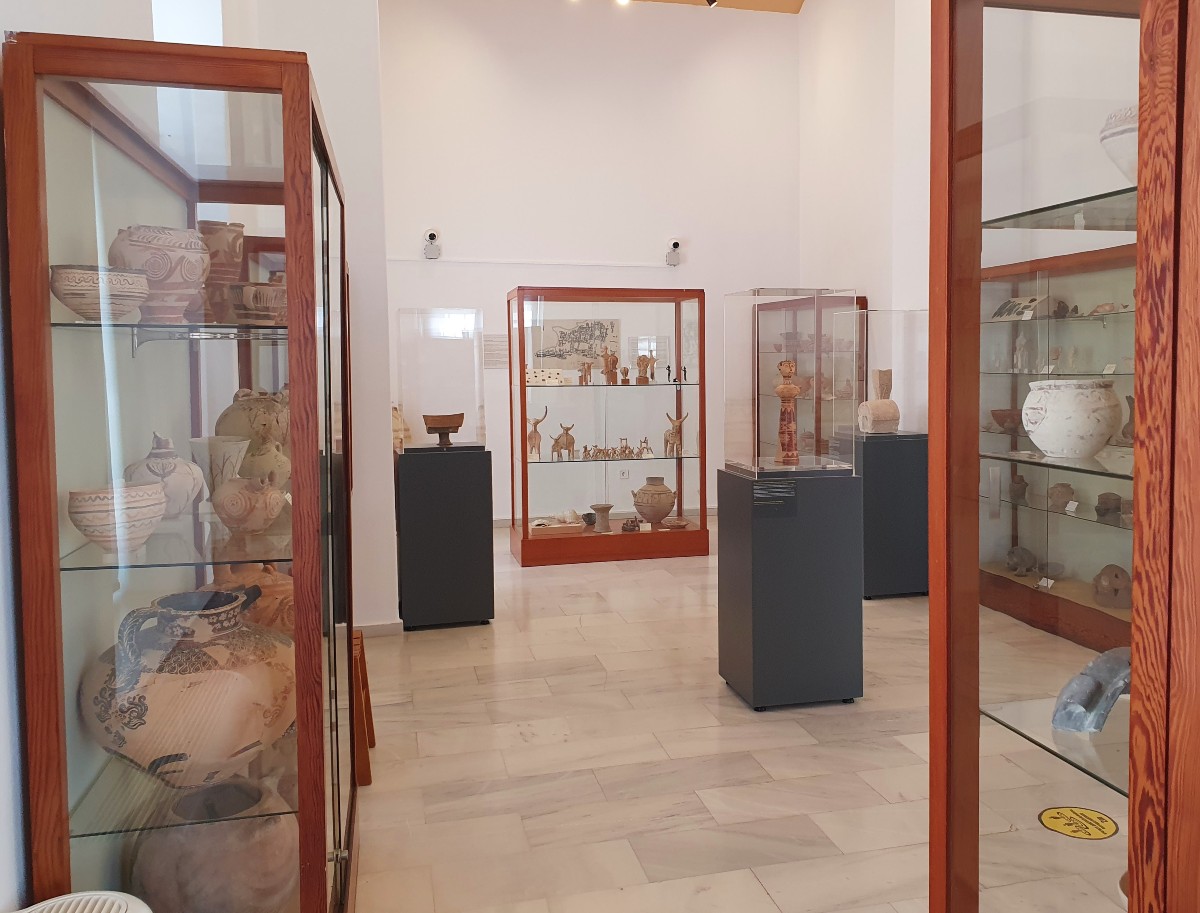
One of the most precious artefacts in the museum is a small terracotta statue dating from the 14th century BC, the Lady of Fylakopi. Other exhibits include more prehistoric finds from Fylakopi, sculptures, reliefs, inscriptions and obsidian tools. There is also an impressive replica of the Aphrodite of Milos statue, which can be seen in the Louvre.
Just across the square from the Archaeological Museum, you’ll find Fatses cafe-restaurant. We only had a small meal here, but were quite impressed. Their evening live music sessions are very popular, so make sure to check them out.
The Statue of Aphrodite of Milos
The statue of Venus de Milo is one of the most iconic Greek statues in the world. It was created in the late Hellenistic Era (2nd century BC), and it depicts Aphrodite, the goddess of beauty and love.

The statue was discovered in 1820, during the Ottoman rule, by a local farmer, George Kentrotas. Soon after, the French naval officer Jules Dumont d’Urville was informed of this discovery. He immediately realized that the statue was invaluable. He notified the French Ambassador, who was very interested in acquiring the statue.
Several versions exist as to how exactly the statue left Greece. But what is certain, is that it was originally presented to King Louis XVIII, and eventually transported to the Louvre in 1821. It has been there ever since.
The Folk and Historic Museum in Plaka
Next door to the imposing Panagia Korfiatissa church, you will find the Folk and Historic Museum. This informative museum presents everyday life in Milos in the last centuries, focusing mostly on the period between 1850 and 1930. You can see pieces of furniture, looms, utensils, tools, traditional costumes, photos, and many other objects.

Outside the museum, you will see a lovely mosaic made of pebbles. There are many more mosaics in Adamas, the port town of Milos.
The museum did not open to the public in summer 2020, but hopefully it will resume operation soon.
The War Museum in Plaka
This underground museum is housed in a building which was used as a shelter and emergency hospital during WWII. It was built by the Germans in 1943, when the bombings commenced. The exhibits include photos, maps, clothes and other objects dating from the two World Wars.
The Sand Museum in Plaka Milos
This small museum / gallery, tucked away in a narrow alleyway in Plaka, is really quite intriguing. The owner has been collecting sand from all around the world for several years. Unexpectedly, comparing sand samples from different countries is really fascinating.
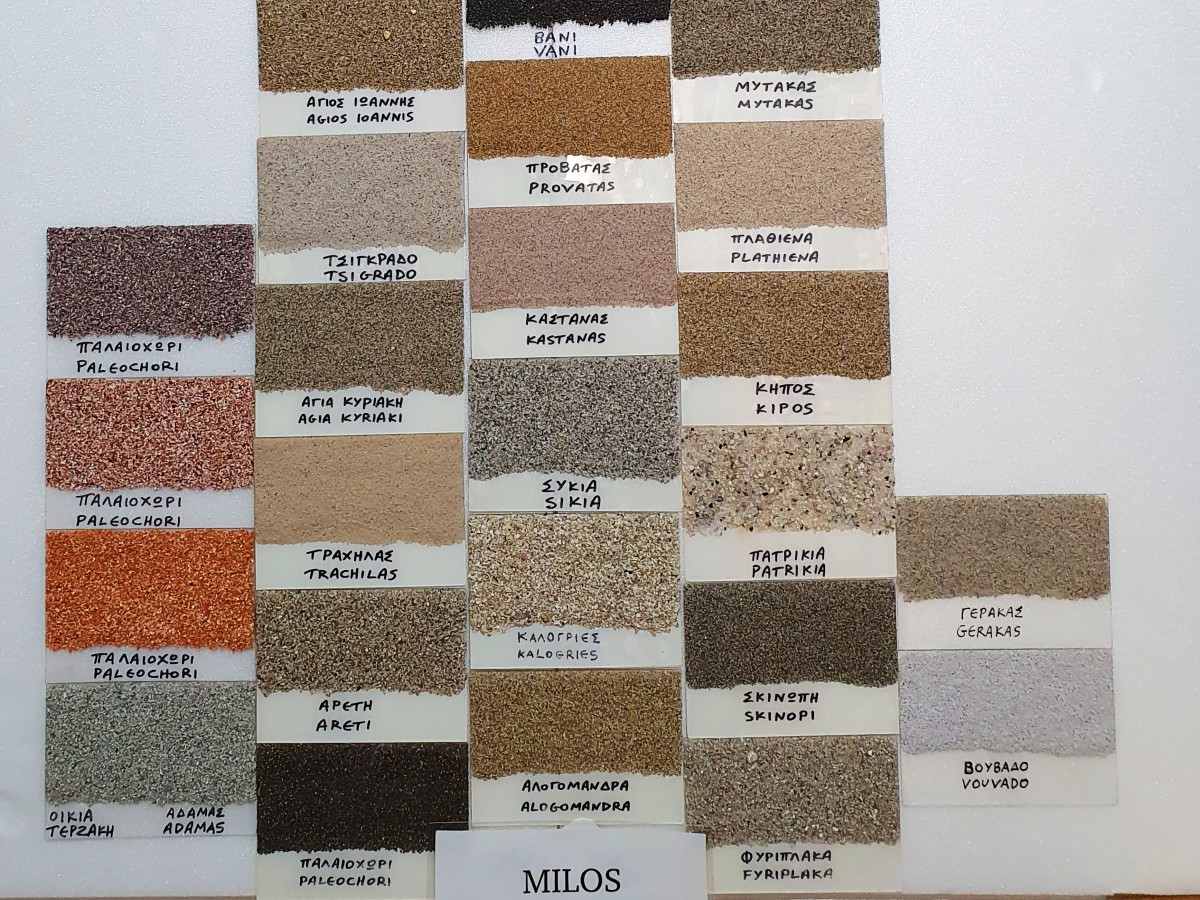
If you are visiting from a country with interesting sand, feel free to bring him some! His website was under construction when we visited, but you can easily find the location on Googlemaps.
Things to do near Plaka Milos
The quaint Cycladic capital is located up on a hill. Many of the most popular attractions in Milos are not too far from Plaka. Some people could reach them on foot, using the island’s hiking trails.
As an indication, there is a popular trail beginning in Trypiti and ending in Klima village, which is about 2.5 km. Walking from Plaka village to Trypiti would take you about 15-20 minutes.
If you are planning to hike, you should know that some parts of the trails will be steep. Avoid the strong midday sun and bring plenty of water. I had no less than 3 litres of water in just a few hours when we did the hike to Kleftiko Bay!
If walking to these attractions in Milos sounds too strenuous, don’t worry. Here’s my guide on how to get around Milos. Just note that parking in Plaka and the nearby villages is allowed in designated parking areas outside the towns.
Trypiti Village
The small village of Trypiti is a short walk from Plaka. Its name comes from the Greek word trypa, meaning “hole”, as the rocks around the village are full of holes.

Places of interest in Trypiti include the church of Agios Nikolaos with its unusual architecture, the nearby chapel of Panagia Tourliani, and the small chapel of Profitis Ilias on the top of the hill. You should also check out the windmills, some of which have been refurbished into seasonal accommodation.
Overall, Trypiti is a pretty, picturesque village, offering wonderful views of the Aegean. Enjoy them over a coffee or meal in one of its numerous cafes and restaurants. Barriello comes very highly recommended, though unfortunately we didn’t have the chance to eat there.
The Catacombs of Milos
Milos is home to the biggest catacombs in Greece. They were built in the 1st century AD, to serve as a Christian cemetery, and discovered in 1840. The length of the corridors is 184 meters, and they are 2-2.5 meters tall.

It is estimated that around 2,000 Christians were buried in the Catacombs until the 5th century AD, when they were closed down due to landslides.
The Milos Catacombs are the third most important Christian monument of its type, so you should definitely include them in your Milos itinerary. Curious about the first two? None other than the Mount of Olives in Jerusalem and the Catacombs in Rome!
The entrance fee includes a short guided tour, and only few people can enter at any given time. Make sure you look for the inscriptions on the walls.
The Roman Theatre of Milos
Like many other places in Greece, Milos has an Ancient Theatre. It was originally built in the 3rd century BC, and was reconstructed by the Romans in the 1st – 2nd century AD. It is estimated that the theatre could host over 7,000 people in ancient times.

The theatre was excavated in the 18th century and was later offered to King Otto as a gift. It came into use from 1930 to around 2000, when it was found unsuitable for audiences, for safety reasons. It was subsequently restored and performances have been held here in recent years.
The theatre is located close to the catacombs, and there’s an easy hiking path between them. On the way, you will pass by the spot where the statue of Aphrodite of Milos was discovered in 1820. In 2022, a replica of the statue was placed right at that spot, overlooking the Aegean.
Klima fishing village
Milos is well-known for its colourful fishing villages. The most famous village is Klima, which was also an important settlement in ancient times.
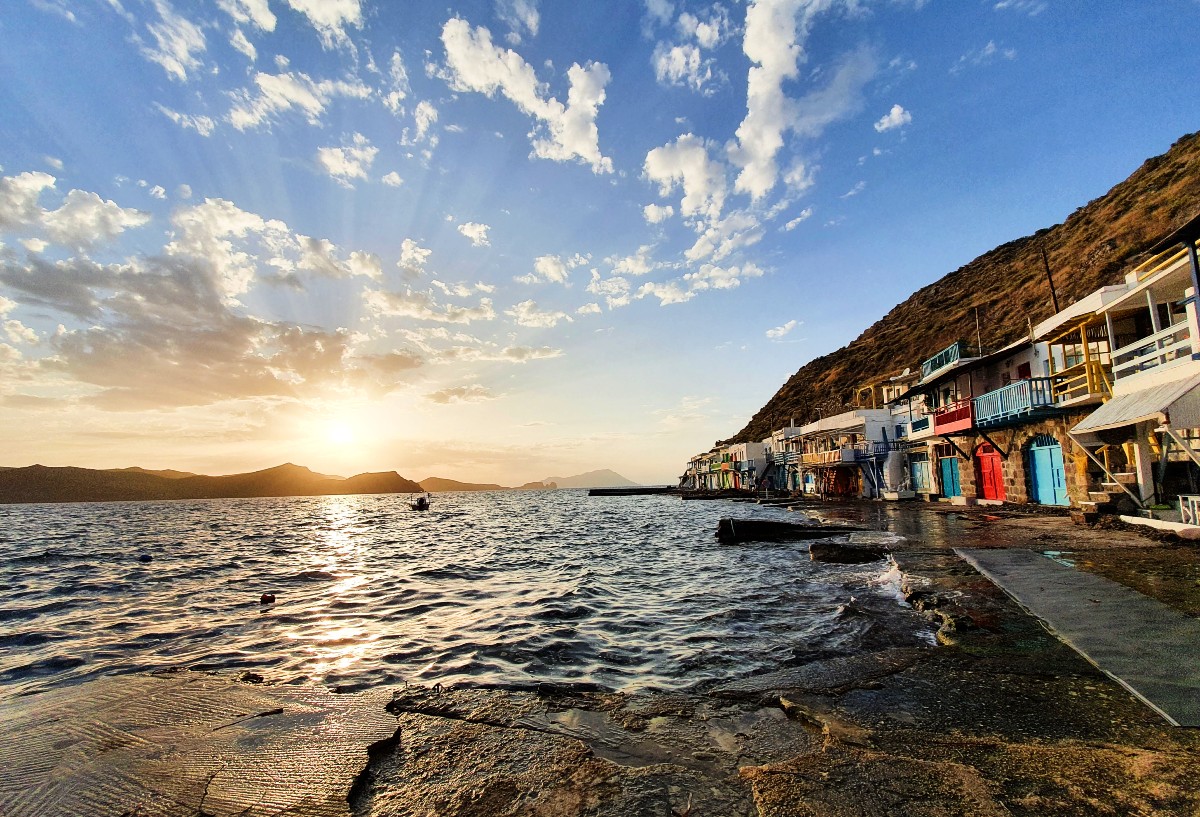
The coastal villages in Milos are where fishermen used to live, keeping their boats in garages underneath their houses. Today, many of these houses, called sirmata, have been transformed into seasonal accommodation for visitors, but they still keep their unique character.
You can get to Klima on a steep road passing by Trypiti village. It’s possible to hike there, but most people will want to hire a vehicle and drive. Try to time your visit so that you can see the sunset, possibly over a meal in Astakas restaurant.
Here’s some more information about Klima Milos.
Triovasalos and Pera Triovasalos
These two small villages, built on two adjacent hills, are a short distance from the capital. The main street, called “Karodromos”, is full of tavernas, cafes, shops, ATMs and public services, and is a vibrant, lively area.
You can also visit the churches of Agios Georgios and Agios Spyridonas. Tip – don’t miss out the fantastic taverna “Bakalikon Galanis“, one of our Milos highlights. More on that, right below.
If you happen to be visiting Milos during Easter, be prepared for lots of explosions and fireworks. Following the tradition, the two villages compete about who will make the most noise! You can also observe the custom of burning the effigy of Judas.
Plaka, Milos restaurants
Our favourite restaurant close to Plaka was Bakalikon Galanis in Triovasalos, with their small delicious dishes. Everything we tried was more than amazing, so we warmly recommend this cool little place!
Fatses in Plaka was also very enjoyable – this was their massive version of a Greek salad! We trust their live music sessions will be one of your Milos highlights.

Avli Milos in Plaka, serving delicious homemade dishes, is another great choice. Don’t be discouraged if there’s a queue!
Barriello in Trypiti and Astakas in Klima came highly recommended, but we don’t have personal experience as we ran out of time to try them all.
One of the best options for relaxed drinks and great music in Plaka is Utopia cafe – bar. It is extremely popular, so go early and grab a table to enjoy their fantastic sunset views.
Frequently asked questions about Milos
Here are a few questions visitors ask about Milos:
How do you get around in Milos?
Milos is a lovely island to explore. As bus connections aren’t very frequent, it’s best to have your own wheels. You can also get around Milos on the various sailing trips around the island. In addition, Milos has several hiking paths that you can use.
Do you need a car in Milos?
While it’s possible to go around Milos without your own vehicle, I totally recommend hiring one. As the roads on half of the island are dirt roads, often in bad condition, you could consider renting a 4WD or perhaps a quad.
Where can I stay in Milos without a car?
Popular places to stay in Milos without a car include Adamas, Plaka and Pollonia. Adamas is the port town of the island and has more connections than Pollonia. Always look at the latest bus timetables, as they tend to change often.
How long is the ferry ride from Athens to Milos?
The fastest ferries from Piraeus to Milos take around two and a half hours. Most other ferries covering the route in just under 4 hours.
Can you fly from Athens to Milos?
Yes, there are domestic flights from Athens to Milos. It’s best to book them in advance, as prices tend to increase closer to the time.
Things to do in Plaka Milos
I hope this guide on sightseeing in Plaka Milos has been helpful. If you are at the planning stages your trip, check out this article about the best time to visit Milos and Kimolos and the 10 best villages in Milos.
If you want to find more about this beautiful island, my partner and I have written a book about Milos and Kimolos, available on Amazon in both Kindle and paper format. Check it out!
For your ferry tickets, check out Ferryscanner – a search engine where you can compare routes and prices, and get your ferry tickets by e-mail.
Finally, check out this list of the best travel apps to use in Greece. Includes Google Maps, Google Translate, and many more.

Hello and welcome to my blog! I am Vanessa, a travel writer from Athens, Greece. I love travelling around my beautiful country. One of my passions is exploring the Greek islands and their quaint towns, like Plaka Milos! I enjoy helping out visitors by sharing my local knowledge and views. You can get in touch through the Real Greek Experiences FB page and FB group.

Lovely site, some great practical information. Thank you.
Louise
Thank you!